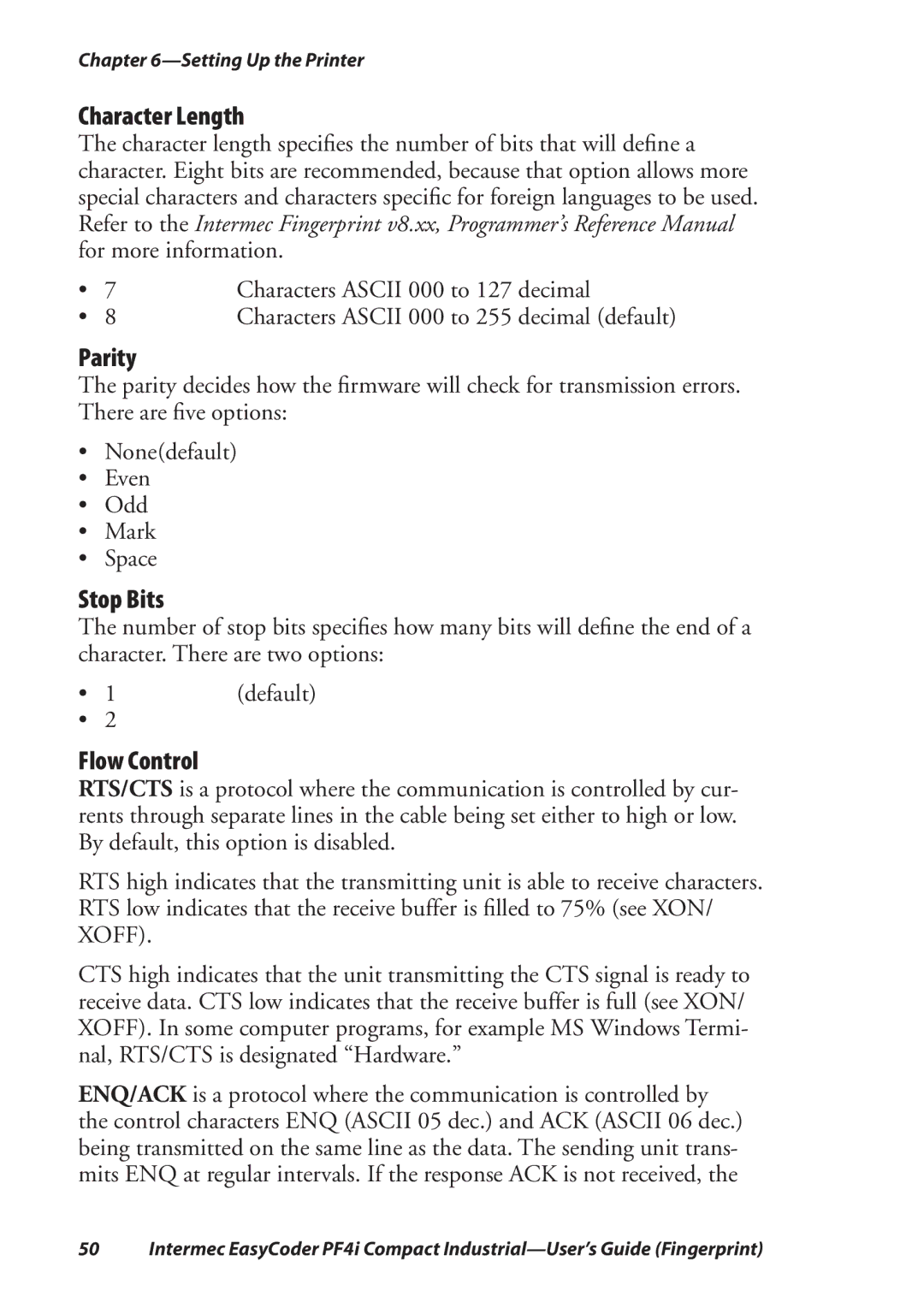Chapter
Character Length
The character length specifies the number of bits that will define a character. Eight bits are recommended, because that option allows more special characters and characters specific for foreign languages to be used. Refer to the Intermec Fingerprint v8.xx, Programmer’s Reference Manual for more information.
• | 7 | Characters ASCII 000 to 127 decimal |
• | 8 | Characters ASCII 000 to 255 decimal (default) |
Parity
The parity decides how the firmware will check for transmission errors. There are five options:
•None(default)
•Even
•Odd
•Mark
•Space
Stop Bits
The number of stop bits specifies how many bits will define the end of a character. There are two options:
• | 1 | (default) |
• | 2 |
|
Flow Control
RTS/CTS is a protocol where the communication is controlled by cur- rents through separate lines in the cable being set either to high or low. By default, this option is disabled.
RTS high indicates that the transmitting unit is able to receive characters. RTS low indicates that the receive buffer is filled to 75% (see XON/ XOFF).
CTS high indicates that the unit transmitting the CTS signal is ready to receive data. CTS low indicates that the receive buffer is full (see XON/ XOFF). In some computer programs, for example MS Windows Termi- nal, RTS/CTS is designated “Hardware.”
ENQ/ACK is a protocol where the communication is controlled by the control characters ENQ (ASCII 05 dec.) and ACK (ASCII 06 dec.) being transmitted on the same line as the data. The sending unit trans- mits ENQ at regular intervals. If the response ACK is not received, the
50 Intermec EasyCoder PF4i Compact
